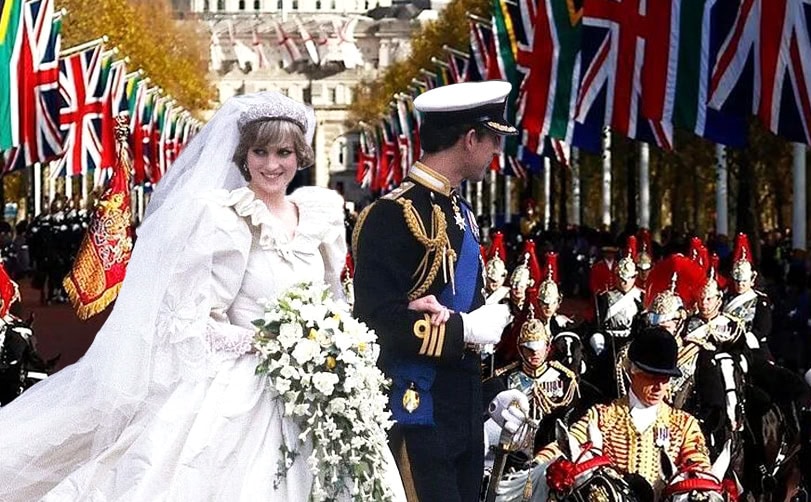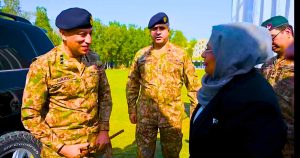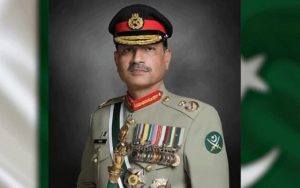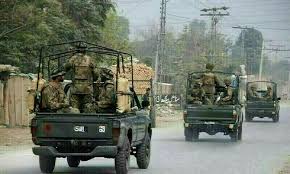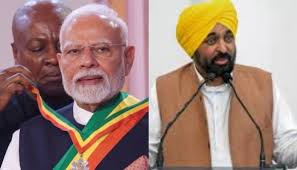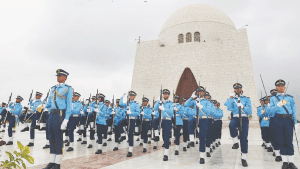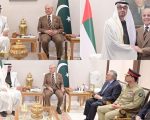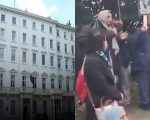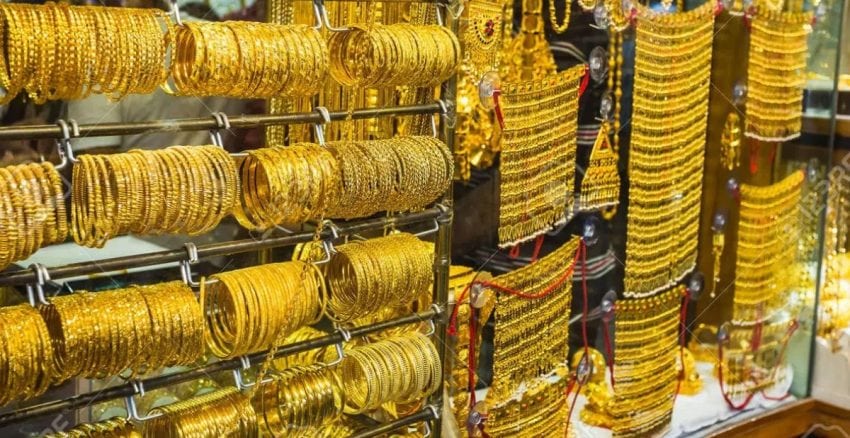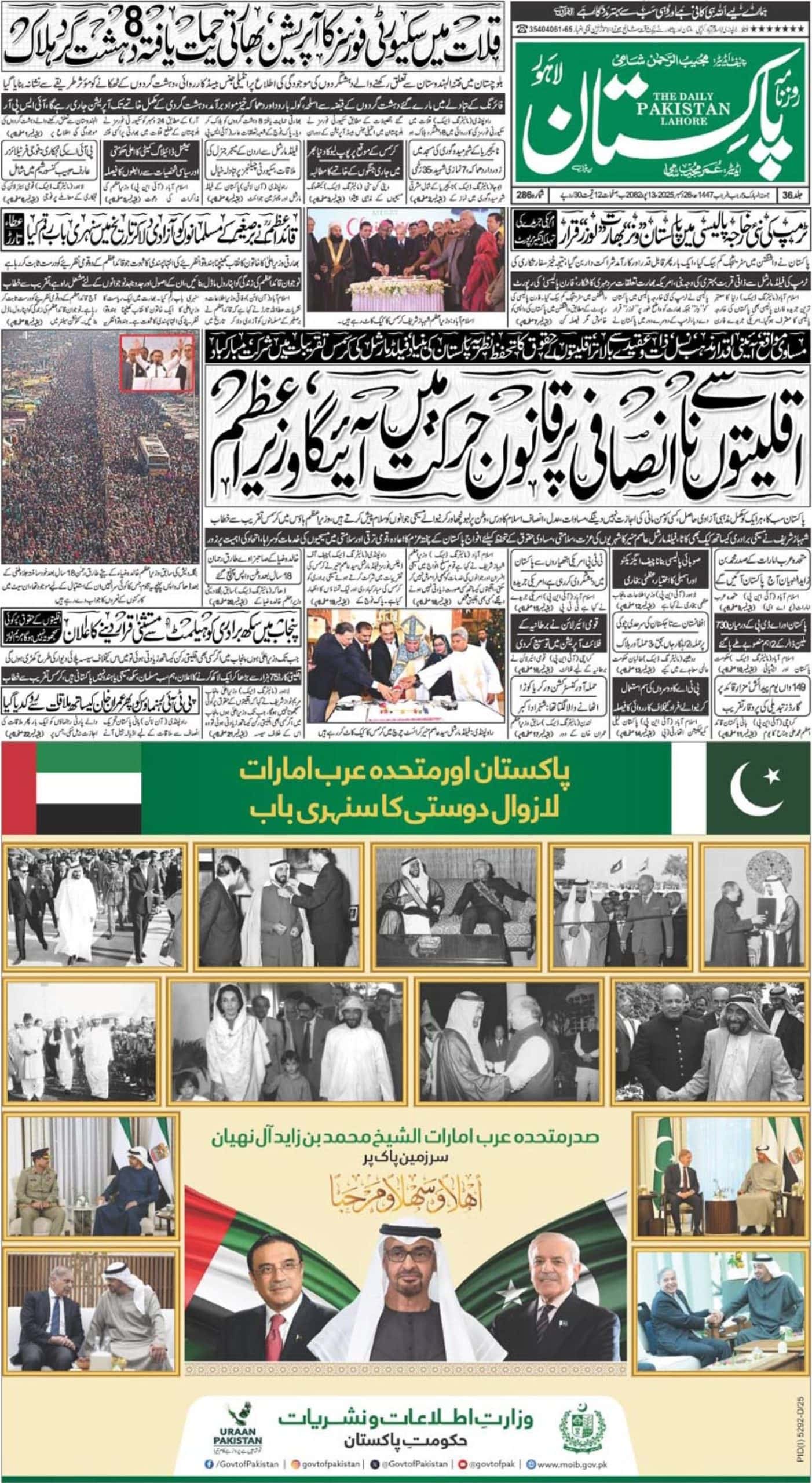Princess Diana died as a result of a car crash in one of the tunnels in Paris in the very early hours of August 31, 1997. Her death stunned the world and led to an unprecedented, and, for the royal family, embarrassingly unexpected, outpouring of grief. A quarter of a century has elapsed since her death, but the world has not, for one moment, forgotten the beautiful, lonely and wronged princess. When she died there were strong suspicions of foul play in her death. Many writers who have investigated the matter have concluded that indeed, she was assassinated in a joint MI6-CIA operation. The royal coroner resisted an investigation into the death for seven years. Only revelations by Diana’s butler Paul Burrell generated sufficient public pressure to force him to open an inquest in 2005!
Why did the Anglo-American Establishment desire to eliminate Princess Diana? What crime had she committed against this Malthusian Establishment? In order to understand the matter one has to first look at the extremely unhappy state of the marriage of Prince Charles and Princess Diana. It was a marriage both had entered into very reluctantly. Prince Charles was in love with Camilla Parker Bowles. Five days before the marriage, Prince Charles told Lord Romsey, grandson of Lord Mountbatten, that Camilla was the only woman he had ever loved. Diana, on the other hand, a young girl not yet 20, looked up to Prince Charles as the prince of her dreams. But, even before her marriage, she was greatly disillusioned by his attitude.
A mere three weeks before their marriage, the royal family held a belated 20th birthday party for Diana. Diana was born on July 1, 1961 while the wedding took place on July 29, 1981. At this event Elton John entertained the guests. At the party Prince Charles not only did not dance with Diana even once, which was highly insulting, he went to bed early. Diana stayed on in the party dancing till 5:00 AM – by that time the guests and the servants had left. At the end of the party Diana drove home and told her father, Earl Spencer, that the marriage was off. Instead of respecting her wishes he tried to persuade her that things would be alright. When she talked to her sisters they told her that there was no room for backing off anymore as her pictures now appeared on tea towels. Only her grandmother Lady Fermoy was not in favor of the marriage. She told Diana: “I don’t think marrying into the royal family will suit you. Their sense of humor and lifestyle are very different.”
Three weeks before the marriage Prince Charles approached his parents regarding his misgivings about the marriage. He did not wish to marry Diana. According to one writer, “Prince Philip became so angry and abusive that the eldest son fled the room in terror.” He then turned to Camilla for solace and support. Camilla told him that if he backed out of the marriage she would not speak to him! She urged him to go ahead with the marriage. She perhaps felt that Diana was a meek young girl who would be easily handled by the two of them. Little did she know. So, both Diana and Charles had serious doubts about the marriage but pressures forced them into the unhappy union.
Diana had never had a boyfriend. Charles was the first man she had dated. It was expected that Charles would formally propose to Diana on New Year 1981 but he procrastinated. He had a luxurious lifestyle and a perfect mistress – he did not want to change things and enter a marriage that could make demands on his unfettered lifestyle. “For God’s sake, bloody well get on with it”, is what his frustrated father is reported to have said to him. He proposed to her in February 1981 and when she giggled yes in response, he snubbed her. On the wedding day Diana spotted Camilla as she walked along the aisle. In her recorded messages she mentioned her bulimia generated by the stress, among other things, of Camilla’s constant thoughts, of the pressure of dealing with a high-profile position, as well as the indifference of her husband. Diana recorded her impressions of the atmosphere at Buckingham Palace in the following words: “I couldn’t believe how cold everyone was. I was told one thing but actually another thing was going on. The lies and the deceit.” Diana stated: “On our honeymoon, for instance, we were opening our diaries to discuss something. Out come two pictures of Camilla. On our honeymoon we have our white tie dinner for President Sadat [of Egypt]. Cufflinks arrive on his wrists – two ‘Cs entwined like Chanel ‘C’s. Got it in one; knew exactly. ‘Camilla gave you those didn’t she?’ He said: ‘Yes, so what’s wrong? They’re a present from a friend.’ And boy, did we have a row.” Thus Camilla’s perennial presence bedeviled the marriage from day one.
When Diana was expecting the first child Charles was continually sleeping with Camilla and Diana suspected so. In the third month of her pregnancy she suffered from serious morning sickness one day and was heard shouting that she wanted to kill herself. Charles called her bluff challenging her to do so. And she hurled herself from the stairs landing as a bundle, where the Queen, to her horror found her. A doctor and a gynecologist were called, but Charles just walked away from his battered and bruised wife. He was extremely selfish. Prince William was born on June 21, 1982. The royal family thus had the new heir. “When we had William we had to find a date in a diary that suited him [Prince Charles] and his polo.” She further stated in a recorded message: “[At William’s christening] I was treated like nobody else’s business on 4th August [1982]. Nobody asked me when it was suitable for William – 11 o’ clock couldn’t have been worse. Endless pictures of the Queen, Queen Mother, Charles and William. I was excluded totally that day.”
Princess Anne’s first lover was Andrew Parker-Bowles. The Queen too liked him but the Princess could not marry him because he was a Catholic! So Princess Anne ending up marrying Mark Phillips. But when her marriage hit the rocks she reverted to her first lover, Andrew Parker-Bowles. But Andrew was married to Camilla. So there was a foursome – Prince Charles was sleeping with Camilla whose husband was sleeping with the sister of Prince Charles! These affairs remained concealed from the public. In the words of an employee of the royal household: “Anne and Charles believed they were in a gossip-proof situation. Their secret relationships were with a married couple who were their best friends.” While all this was going on the second child Harry arrived. Diana told her biographer Andrew Morton about the times around the birth of Harry (born September 15, 1984): Charles always wanted a girl for a second child. Diana states: “Harry arrived. Harry had red hair, Harry was a boy. First comment was ‘Oh God, it’s a boy.’ Second comment ‘and he’s even got red hair.’ Something inside me closed off. By then I knew he had gone back to his lady but somehow we’d managed to have Harry.”
After Harry’s birth there was no room for conjugal relations in the marriage. Diana was only 23 at the time. Wendy Berry, housekeeper at Highgrove, said: “The prince’s indifference would have been crushing for anyone. He was so aloof and uncaring. I began to see the absolute desperation and frustration felt by both the prince and the princess, having to live within a marriage that was patently falling apart at the seams.” The new turn in their marriage led to blistering rows. And when they fought they did not care about their language and about who was watching or hearing. “You’re a shit Charles, an absolute shit” she once leaned out of the window and shouted as Charles stormed out of the house and drove away. On another occasion she threw a teapot at him, yelling: “You’re a fucking animal Charles and I hate you.” This was a painful situation. Her biographer wrote: “He was the man she wanted to be with for the rest of her life and she was willing to jump through any hoop or hurdle to win him.” But to accept a position in which she was his second choice, if at all, was not possible for her. As she said: “He [Charles] ignores me everywhere. Ignored everywhere and have been for a long time. …. He just dismisses me. [The worst day of my life] was realizing that Charles had gone back to Camilla.” So if the conjugal relations had ended, it was certainly not Diana’s fault.
There was one upside for Diana in the deeply depressing circumstances of her royal life. The crowds just loved her. Noel Botham writes: “Jealousy and resentment of her phenomenal success as the principal royal attraction already colored Charles’s attitude towards Diana, and it began affecting him in other ways too, principally his growing dependence on Camilla…” This resentment was also shared by royal courtiers and by his aides, “who were beginning to realize that Princess Diana could be a greater threat to the stability of the royal family than anyone had so far realized.” Diana had no support whatsoever in the royal confines. She was expected to accept Charles’s adultery without complaining or reacting. “In private, all the royal women tended to sympathize with Charles over Diana’s refusal to be compliant about Camilla” wrote Botham. Prince Charles and his father agreed that Diana was being unreasonable “in her refusal to accept the normality of Charles’s affair with Camilla.”
It never occurred to anyone that a completely isolated beautiful young woman in her twenties might take on a lover of her own. In 1985, Sergeant Barry Mannakee was assigned to her. He was 37, was good looking and understood her situation and sympathized with her. Andrew Morton wrote: “Perhaps she reserved her fondest memories for Sergeant Barry Mannakee who became a body guard at a time when she felt lost and alone. He sensed her bewilderment and became a shoulder to lean on during the painful period.” Her closeness with Mannakee was noticed and an angry Charles had him transferred when he overheard Mannakee advising Diana on how to deal with Camilla. Eight months later Mannakee was killed by the agencies, in what was made to look like a motorbike accident. Charles broke the news to Diana “in a calculated and brutal way designed to cause her the maximum amount of pain.” Just as she was about to emerge from the car to board a plane to attend the Cannes festival he said that he had heard from the protection unit that “poor Barry Mannakee was killed. Some kind of motorcycle accident.” As Diana burst into tears he pushed her out saying sarcastically “Let’s go darling. Your press awaits you.”
Diana was a woman in search of love. She got involved with James Hewitt her riding instructor. She wanted to marry him but Hewitt seems to have avoided that, partly because he received veiled death threats and partly out of greed – he sold the story to a French writer who published a book on their love story. Most of Diana’s affairs, excepting the ones with Hasnat Khan and property developer Christopher Walley, were dealt with by the media, with or without help from the agencies, in a scathing way. When Diana was involved with Hasnat Khan, her mother told her firmly to “stop going out with fucking niggers.” But Diana was looking for love, for a proper family life with a man who loved her and who she loved and it did not matter whether it was a “fucking nigger” or a white Anglo-Saxon.
In July1992 Andrew Morton’s biography of Diana appeared. It was this biography that first revealed to the public the reality of the Camilla-Charles affair. It shed light on her difficult life at the palace and also revealed her involvement with some of the men. It exposed the selfishness of Charles who remained unmoved by several attempts on her part to harm herself seriously – these suicide attempts were failed attempts at getting his attention – they were cries for help. Her biography had a great impact on the public mind. “Her in-laws were not just rocked to the foundation, but were in danger of falling down entirely.” Even though Diana had supplied the author with many hours of tape-recordings, she denied any involvement because she grew fearful of the royal reaction. Prince Philip was furious. Noel Botham writes: “To Prince Philip it was a devastating blow. He saw all his hard work in reshaping and consolidating the family since 1947 being wiped out by Diana’s ill-judged revelations. It stirred feelings of real hatred for the first time, I was told.” Camilla was subjected to enormous public resentment and took refuge overseas in order to avoid the public and the press. Further, leaders of the Church of England expressed a deep lack of confidence in Charles – how could he, after sacred vows in church, continue his adulterous relation? The publication of this book not only rendered the differences between Diana and Charles irreconcilable, it also distanced her further from the royal family.
The matters were further aggravated by two tapes which were leaked by the agencies. In one tape was the recording of a conversation that took place between Diana and James Gilby, a car dealer, on New-Year’s eve of 1989. This conversation was picked up by a radio buff on January 4, 1989. How could that be? Apparently, the conversation had been recorded and “cleaned up” for “noise” using equipment that only the MI5 and MI6 possessed, and then rebroadcast. In the conversation Gilby used the name Squidgy for Diana, hence the name Squidgygate tapes. In the conversation Diana had expressed her fear of getting pregnant indicating the physical nature of the relationship. The transcript of the tapes was published by the tabloid The Sun in August 1992. This was just a month after the publication of Diana’s biography and caused deep embarrassment to Diana. However, in January 1993, recording of an intimate and lewd conversation between Charles and Camilla were leaked to the media. This conversation was recorded on 17 December 1989. In the Charles-Camilla conversation: “Charles admits he needs her several times a week. It would be much easier if he lived inside her trousers. But when she proposes he turn into a pair of knickers, he comes up with the idea of becoming a Tampax.”
The publication of the nighttime Camilla-Charles chat generated an enormous public response. Camilla began receiving a huge volume of hate mail every day. She was attacked by shoppers with bread rolls in a store and had to take refuge in her home. She was shattered by this exposure and lost 25 pounds in weight and seemed to age by a decade. Diana had no role in this leakage. The two leaked conversations had two consequences. Firstly, since it was Diana’s voice in Squidgytapes, it led to formal separation between Diana and Charles. On December 9, 1992 PM John Major stated: “it is announced from Buckingham Palace that, with regret, the Prince and Princess of Wales have decided to separate.” The other consequence was the eventual divorce between Andrew and Camilla, which had to await a public confession by Charles.
The royal family had now turned hostile to Diana. And Diana realized that certain individuals in the palace, men in “grey suits” and educated in public schools, who considered themselves to be the guardians of monarchy, had become her enemies. In the year 1994 Charles indulged in two public relations exercises. Firstly, in a TV documentary, he made it clear that Diana was nothing more than a hired womb. Secondly, a biography of Charles was published in which the author, based on information supplied by Charles, mentioned that the affair with Camilla started sometime in 1987 or 1988 after Diana and Charles started leading separate lives. This was an utter lie. However, soon after Charles’s confession Andrew and Camilla filed for divorce on grounds that in the past three years, they had not slept under the same roof for more than three months. On January 19, 1995, the High Court took a mere three minutes to grant them divorce. They had been married for 21 years.
The TV interview of Charles might have been the reason for an interview that Diana did with the BBC’s Panorama program, that was aired on November 24, 1995. Diana did not assess how the interview was to bring her into the crosshairs of the royal family, the courtiers and the agencies. Noel Botham writes: “The whole interview was a masterly piece of theatre, designed with orchestrated pre-publicity, to wring the maximum sympathy and tears from the multi-million-strong viewing audience.” Two of her remarks remain enshrined in public memory – one, that she thought Charles was unfit to be king, and second “There were three of us in this marriage, so it was bit crowded.” Botham comments: “If Diana’s intention was to expose the full extent of her husband and Camilla’s treachery and heap further contempt and loathing on them from an already disgusted public, then she succeeded brilliantly.”
This interview immediately generated reactions from those concerned. Botham assesses: “What angered the men in grey suits, however was that Diana had developed the capability of outmaneuvering them.” On November 25, the very next day, the New York Times carried a piece by the British writer A.N. Wilson who referred to the interview as a “skillfully organized attack on the institution of monarchy itself.” He emphasized that “[T]he Establishment can get very nasty indeed, and that for all her undoubted popularity, if she continues to rock the boat in this way, the Establishment will simply get rid of her.” This was a most explicit, prompt, and dire warning. Military historian John Keegan wrote in the Daily Telegraph in November 1995: “The important thing is Diana should set limits to her ambitions. She has said she will not go quietly. She must, however, not go too far … The people know how much change in the system they desire. If the Princess exceeds their wishes, it is she who will become the casualty, not the monarchy.” It is thus clear that discussion of her possible elimination had begun openly after the Panorama interview. And the Princess was alone in her personal life – the royal family had been estranged and her own family also shunned her.
The reaction of the royal family was swift and unsparing. On December 21, 1995, less than a month after the interview, the Queen wrote letters to Charles and Diana ordering them to divorce. The Queen privately directed Charles not to haggle over the terms of the divorce. Without any argument Charles paid her 17 million pounds as part of the settlement. The Queen however punished Diana by taking away her royal title. Even though she retained the title of Princess of Wales she was no longer HRH (Her Royal Highness). As Botham wrote: “It was such a shabby punishment, and even though delivered with a golden slipper, it was still a kick in the face of Diana. Staff and friends nodded when they heard her most screamed cry, ‘After all I’ve fucking done for that family.”
The royalty had cast her off and was unsparing in that respect. Her court enemies now could think of eliminating her because, as long as she was alive, Charles could not ascend the throne easily. The security that came with the HRH title was now removed. Diana always felt that Prince Philip, the Queen’s husband, did not like her. In spring 1996 she had told her friend and fashion designer Roberto Devorik “Prince Philip wants to see me dead.” Again, in June 1996 she pointed to a portrait of Prince Philip and said “He really hates me and would like to see me disappear.” In December 1995 Time magazine quoted a “veteran royal watcher” as saying “The Queen is disgusted with Diana and wishes she’d just go away.”
Diana’s former private secretary Patrick Jephson told the tabloid The Sun in October 2003: “Early in 1996 the Princess assured me that somebody had cut the brake pipes of her car and that her apartments at the Kensington Palace had been bugged.” This incident happened in November 1995. As she pressed her brakes when a traffic light turned red, nothing happened – the car kept moving forward. Eventually when the car came to a halt she jumped out and returned to Kensington Palace in a taxi and rang up Simone Simmons and told her “Someone’s tampered with my brakes.” Hasnat Khan noticed that she had changed her car, from an Audi to a BMW. When Hasnat asked her the reason for the change she told him that the brakes had been tampered with so she decided to change the car.
The BMW had a very strange accident on 22 March 1996. According to the Daily Mail: “A Porsche 911 smashed into a parked Fiat and sent it careering into the path of [Diana’s] rented BMW… The front wing and driver’s side of Diana’s car were mangled. A policeman at the scene: ‘The Fiat was propelled across the road into the path of oncoming cars… The BMW is too damaged to be driven away.” Diana, reportedly, was “white-faced with shock” but, as a passing motorist said, “extremely lucky” to have survived. Hurtling cars across to oncoming cars to commit assassinations is also a known technique. The report of the police investigation of the accident was never released, nor was this very serious accident mentioned in the Paget report or the London inquest. Why?
In October 1996 Diana gave a written note to her butler Paul Burrell: “This particular phase in my life is most dangerous. My husband is planning an accident in my car, brake failure and serious head injury, in order to make the path clear for him to marry.” In the same note she wrote that she had been “battered, bruised, and abused by the system” for 15 years and that she will “never surrender.” She wrote “I am strong inside and maybe that is a problem for my enemies.” On October 30, 1995 Diana met her lawyer Lord Mishcon in office and told him, in the presence of two other lawyers of his firm that it was planned to eliminate her in a car accident. Lord Mishcon was so disturbed that he wrote down a note based on whatever she told her for his record. When Diana died, Lord Mishcon handed over his note to the Metropolitan Chief Commissioner, who hid it, and did not give it to the French judge investigating the matter. The existence of this note was revealed only in 2003, after Paul Burrell disclosed the existence of a ten-page write up that Diana gave him, expressing her apprehension of being killed in a car accident.

